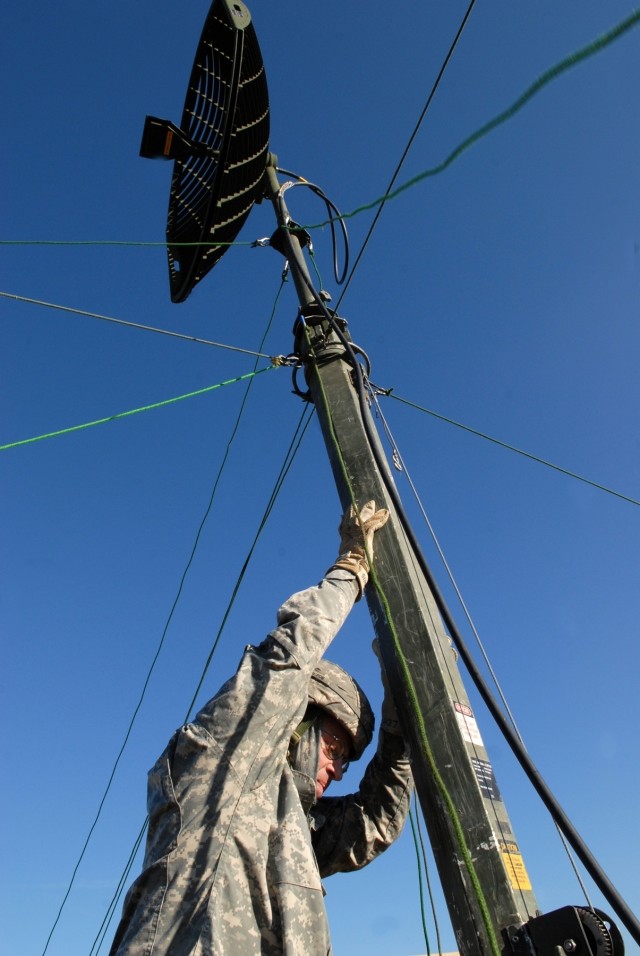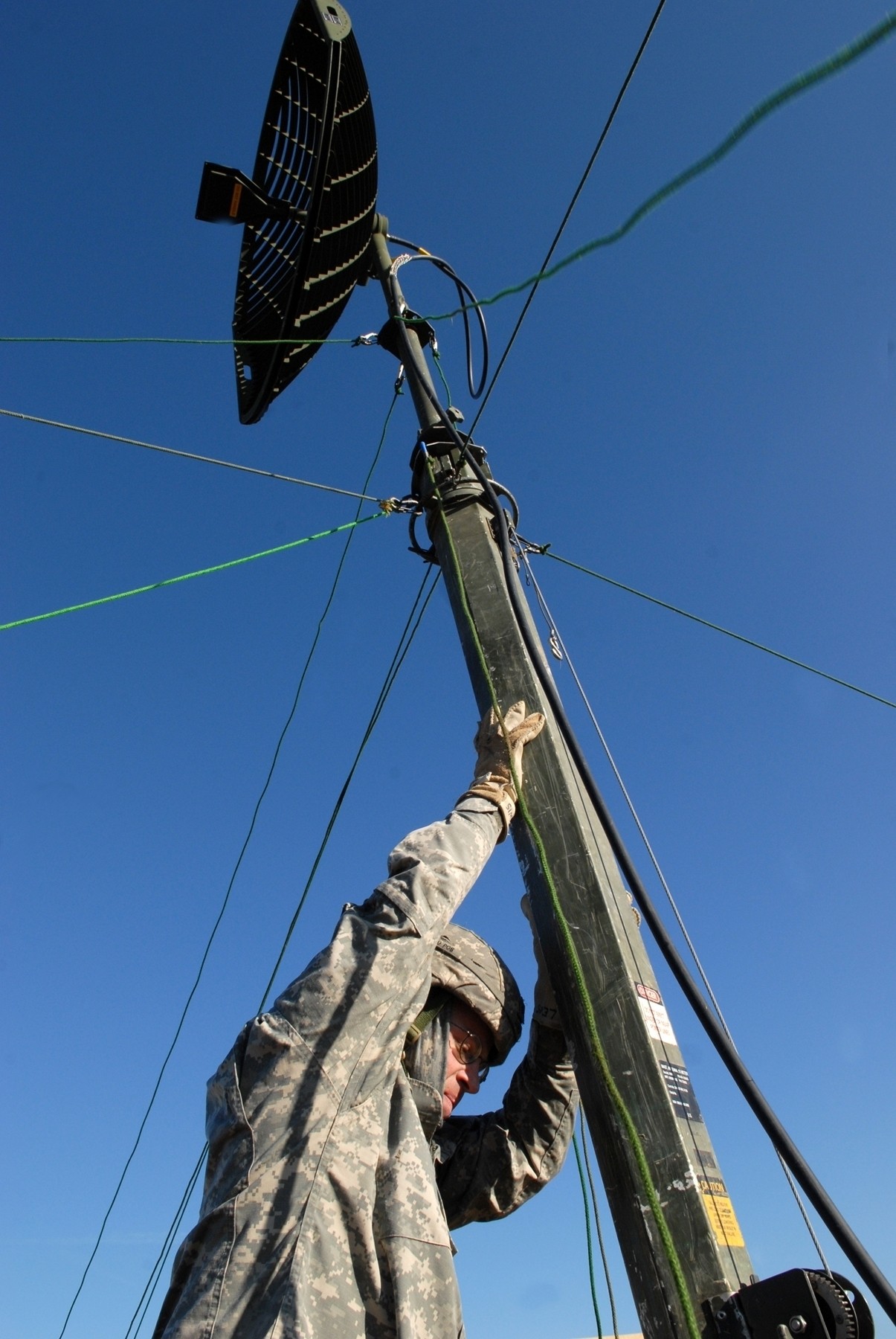GRAFENWOEHR TRAINING AREA, Germany (Army News Service, Feb. 5, 2008) -- Signal waves and U.S. Army Europe Soldiers blanketed the Bavarian fields during a network training exercise dubbed "Dragon Warrior."
The doubleheader exercise began in January, when Soldiers from the 72nd Signal Battalion of USAREUR's 5th Signal Command packed up convoys at their headquarters in Mannheim, Germany, with their newly fielded Joint Network Node equipment for deployment to Grafenwoehr.
The 72nd spread out across the training area to test the setup that will be used for networking the upcoming USAREUR exercise "Austere Challenge." Implementation of the new equipment would also validate the unit as an "expeditionary" signal battalion.
The 72nd is currently considered an "integrated theater" signal battalion. The main difference between an ITSB and an ESB is new JNN capabilities that allow the battalion to be more modular, officials explained, and provide a greater range of communications services using fewer personnel.
"We are using the same network set-up for 'Austere Challenge,'" said Lt. Col. Jay Chapman, commander of the 72nd. "We have to be up and running, (communications) in place, on day one, and this exercise gives us the chance to work out a lot of kinks prior to that day."
Chapman explained that the 72nd is the tactical extension of the network "enterprise" that is run by 5th Signal's 2nd Signal Brigade. "(The) 2nd provides the garrison day-to-day support, and we extend the garrison network out to the warfighters," he said. "We will be doing it seamlessly so the users will not know if they are plugged into the garrison's network or our network. They will be able to access what they need to get their jobs done without degradation in service."
Unit officials say this is the first time since leaving for Iraq in 2005 that the battalion has trained in a field environment. The majority of their equipment is new from the factory, and so is the training the Soldiers have received.
"It has taken a lot of work to get to this point," said Staff Sgt. Chad Jones, of the 72nd's A Company. "We have brand-new equipment, new training, and the Soldiers have put in long hours with a lot of work."
To prepare for the "NETEX," the battalion ran a "switch exercise" in the battalion's motor pool on Sullivan Barracks in Mannheim to its train section chiefs while most of the Soldiers were in the classroom portion of the training.
"The motor pool exercise was static, and every piece of equipment was all in a row, so if we had a question or problem we could just look over and ask," said Jones. "For the NETEX, we are spread out like we would be (during a deployment). So it is much more realistic, which makes it very good training."
"The classroom training is good," said Pfc. Jordan Burnett, of the battalion's C Company. "But learning out in the field is better, because you get hands-on training, and it shows you where you fit in a bit more."
The unit's mission has shifted with the addition of the new equipment.
"Instead of working from a fixed location in Iraq, as in the past, we now have a tactical mission," said Chapman. "This exercise is allowing us to replicate systems we will have to put in place by expanding distances between locations. It shows us the logistics it will take to be successful."
(Sgt. Elizabeth Sheridan serves with 5th Signal Command Public Affairs Office.)
Related Links:
See related article: Army Previews Future Network's Revolutionary 'Mobile Backbone'


Social Sharing